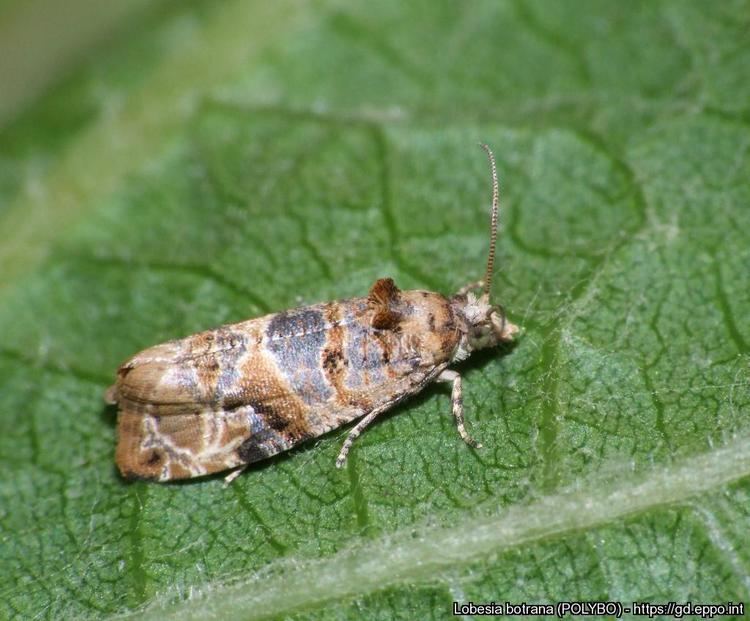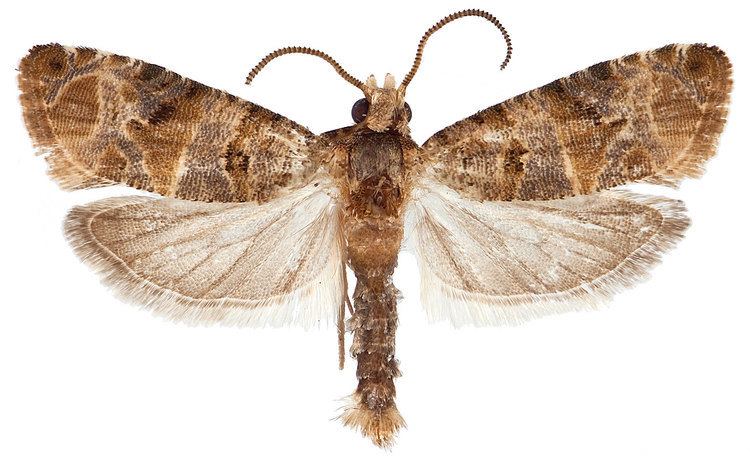Rank Species | Higher classification Lobesia | |
 | ||
Similar Lobesia, Eupoecilia ambiguella, Insect, Tortricidae, Butterflies and moths | ||
Identificaci n de lobesia botrana en campo conceptos fundamentales
Lobesia botrana, the European grapevine moth, is a moth of the family Tortricidae.
Contents
- Identificaci n de lobesia botrana en campo conceptos fundamentales
- Lobesia botrana larva l3 di 2 gen 25giu15 ed marchesini
- Distribution
- Description
- Biology
- An invasive species
- References
Lobesia botrana larva l3 di 2 gen 25giu15 ed marchesini
Distribution

This species is native to Southern Italy. It can be found in Southern Europe, North Africa, Anatolia and the Caucasus. Recently it has been introduced into Japan and Chile.
Description

Lobesia botrana can reach a length of 6–8 millimetres (0.24–0.31 in), with a wingspan of 12–13 mm. The females are slightly larger. The external surface of the forewings is mottled with tan-brown, greyish and dark-brown blotches. The rear wings are gray with a fringed border. Larvae can reach a length of 8–9 millimetres (0.31–0.35 in). They are yellowish green to light brown with a light yellow head.
Biology

The larvae mainly feed on the flowers and fruit of grape (Vitis vinifera) and spurge laurel (Daphne gnidium), but it has also been reported on several other plants (Rubus fruticosus, Ribes sp., Olea europaea, Prunus avium, Prunus domestica, Actinidia chinensis, Punica granatum, etc.). Lobesia botrana normally has two - three generations in Europe. Larvae develop in 20 to 30 days. Pupae overwinter inside a silken cocoon.
This species is considered a major vineyard pest in its native range, as the larvae feed on the interior of grapes, hollow them out and leave excrements.
An invasive species
The moth was found in the Napa Valley of California in October 2009, the first record in the United States. Confirmation of that detection led to increased trapping and surveys that have since detected the pest at several sites in the county. On March 9, 2010, the California Department of Food and Agriculture (CDFA) announced it had established a quarantine of 162 square miles (420 km2) including portions of Napa, Sonoma and Solano counties. The quarantine affects movement of host material from inside the infested area. As of May 12, 2010, Fresno county was also placed under quarantine after traps near Kingsburg, California contained two specimens within 2 miles (3.2 km) of one another. Mexico has also notified the USDA that no fruit from this county will be accepted for import into Mexico which will greatly impact California stonefruit and grapes.
In August 2016, with no moths found since June 2014, the state declared that Napa County, and California, were free of the invasive species.
